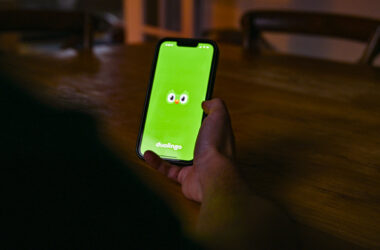When the smartphone was invented, to have access to such a coveted—and expensive—piece of technology was an extreme privilege. Now, the smartphone is virtually ubiquitous—with over 90 per cent of Canadians owning one—and 21st-century users must confront a new problem: How to stop using it.
Phantom buzz, obsessive notification-checking, and social media addiction are plaguing young people, leading to the pursuit of unconventional methods to prevent phone overuse. Teenagers buy flip phones to internet-detox, purchase phone lockboxes with timers, set their screen to grayscale to decrease its stimulating appeal, and even go as far as to buy something called the “nophone,” a piece of plastic with a weight and size equivalent to a real phone’s. Yes, you read that right: People are spending money on non-functioning plastic blocks to mimic the presence of a phone in their back pockets. The placebo phone retails for an astonishing $34 CAD.
Yet, the phone addiction fighter that has claimed the most significant popularity among university students is the Flora app. The app has amassed over 2.5 million users with its creative premise: Users cultivate a digital “garden,” in which every study session they log in the app “grows” a tree, plant, or flower. Users set a personalized study time commitment—whether it be 10 minutes or three hours—that, if completed, results in the growth of a tree. Should a person violate their study commitment by exiting the Flora app to access social media, messages, the internet, or any other app, their tree is killed—an outcome that is shared with every one of their Flora friends. Users also have the option to wire their credit cards to their account, meaning that every time they kill a tree, their bank account is charged a user-designated amount between $5 CAD and $100 CAD.
Of course, the majority of phone users do not use this feature of the app, but its presence serves as a testament to a broader theme: Tech companies have realized that the fight against phone addiction is something that can be commodified. Like a vape to a cigarette, Flora emphasizes the negative connotations of addiction while simultaneously gaining from them. In this circular addiction economy, someone is always making a profit, whether it’s the smartphone industry or wellness app inventors. The developers of Flora, with a profit motive to maximize engagement and user downloads, had an incentive to design the app with its own addictive quality. After all, would users even employ the technology if it wasn’t colourful, full of graphics, and highly gamified? Flora, therefore, has an ironic, paradoxical nature in which its purpose may be to reduce phone use, but its solution requires downloading another app. Users then end up deepening their reliance on technology, worsening the very addiction they intended to fight and making Flora a relief mechanism, not a solution.
Although the Flora app has merit as a potential harm-reduction tool, its users must be conscious of the fact that the quest to beat phone dependency has yet to be won. There are multiple means through which true liberation from phone addiction can be achieved: Periodic tech detoxes; the use of physical—as opposed to digital—software such as paper books, planners, or calendars; and building habits and hobbies that take place off the internet, including knitting, reading, and creating art. These methods will, of course, have varying degrees of success from person to person. There is no singular or ultimate solution. However, this much is clear: Phone addiction will only be eased—not solved—by the presence of commodified technology solutions like Flora.









